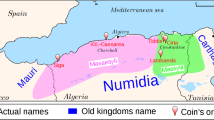Abstract
Non-destructive analysis of the composition and structure of various ancient Chinese currencies, including two Ming-style knife money from the Zhou Dynasty and nineteen square-holed coins from the Tang and Northern Song Dynasties are presented. The knife money are estimated to have been minted around 360 to 255 B.C., while the nineteen square-holed coins are estimated to have been minted between 621 and 1117 A.D. All currency, except for the bent knife money, was analyzed non-destructively using synchrotron radiation X-ray diffraction and scanning electron microscopy with focused ion beam and energy dispersive spectroscopy to determine their structure (phases present), microstructure, and elemental distribution. The currency was generally found to be composed of primarily a CuSn alloy with small amounts of Pb and Fe and trace amounts of other elements and oxides. The main phase present in all coins examined using synchrotron radiation X-ray diffraction is an FCC CuSn alloy along with FCC reflections from the traces of Pb. The immiscible Pb within these Cu-based alloys was found to be distributed as small globules or islands ranging between 10 and 80 μm and scattered throughout the Cu-based matrix. Scanning electron microscopy with energy dispersive spectroscopy provided some microstructural and elemental distribution information, but analysis was made difficult due to corrosion/oxidation at the surface which cannot be removed non-destructively. Synchrotron radiation X-ray diffraction was much more helpful in providing crystallographic orientation and phases as it could be used to measure the bulk material of the samples past the relatively thinly oxidized surface. While authenticity of the currency is difficult to determine, the presence of Pb is a good indicator as it is not commonly used in modern CuSn alloys.








Similar content being viewed by others
References
A. H. Quiggin, Routledge, 2017.
W. T. Chase, Technol. Mediev. Jewel., 1992, pp. 85–182.
A. Oddy and D.A. Scott: Stud. Conserv., 2002, vol. 47(4), p. 277.
R. A. Mundell and R. Mundell, 2002.
C. Holcombe, 2020, vol. I.
D. Hartill, Trafford Publishing, 2005, pp. 54–200.
J. Zhao, Z. Zuoyong, and W. Xiaomei: Sci. Conserv. Archaeol., 2009, vol. 21(1), p. 51.
N. Horesh and H.J. Kim: China Rep., 2011, vol. 47(4), pp. 279–302.
M.J. Furtado, R.J.C. Silva, M.F. Araújo, and F.M. Braz Fernandes: Mater. Sci. Forum, 2010, vol. 636–637, pp. 531–37.
W. Gao, Taipei Cty. Hua Mulan Cult. Press, 2010.
X. Huang, Beijing Forbid. City Press, 2001.
S. Zhang, W. Xiaomei, and Y. Jijie: Archaeology, 2005, vol. 9, p. 82.
M.L. Young: Rep. Progr. Phys., 2012, vol. 75(3), 036504.
M. Carl and M.L. Young: Microchem. J., 2016, vol. 126, pp. 307–15.
M.L. Young, F. Casadio, J. Marvin, W.T. Chase, and D.C. Dunand: Archaeometry, 2010, vol. 52(6), pp. 1015–043.
P. Northover, A. Crossley, C. Grazioli, N. Zema, S. La Rosa, L. Lozzi, P. Picozzi, and E. Paparazzo: Surf. Interface Anal., 2008, vol. 40, pp. 464–68.
L.K. Herrera, A. Justo, A. Munoz-Paez, J.A. Sans, and G. Martinez-Criado: Bioanal. Chem., 2009, vol. 395, pp. 1969–975.
L. Pierre, S. Cea, B. C. E. A. Saclay, and G. Yvette, 2006, vol. 193, pp. 189–193.
M.L. Young, J.D. Almer, M.R. Daymond, D.R. Haeffner, and D.C. Dunand: Acta Mater., 2007, vol. 55(6), pp. 1999–2011.
M.L. Young, F. Casadio, S. Schnepp, E. Pearlstein, J.D. Almer, and D.R. Haeffner: Appl. Phys. A, 2010, vol. 100(3), pp. 635–46.
P. Xinwei, Shanghai People’s Publishing House, 1958.
H. W. Sheng, 2022, https://www.financialnews.com.cn/cul/tzsc/202201/t20220107_236945.html
J. B. Noyan, C, Cohen, Residual Stress: Measurement by diffraction and Interpretation. Springer, 2018.
B.H. Toby and R.B. Von Dreele: J. Appl. Crystallogr., 2013, vol. 46(2), pp. 544–49.
M.L. Young, F. Casadio, S. Schnepp, J. Almer, D.R. Haeffner, and D.C. Dunand: Appl. Phys. A, 2006, vol. 83(2), pp. 163–68.
D.J. Chakrabarti and D.E. Laughlin: Bull. Alloy Phase Diagr., 1984, vol. 5, pp. 503–10.
X. Li, CNKI, 2009.
Acknowledgments
This work is dedicated to Marcus Young’s father, Carl Young. The authors would like to thank John Stich, Honorary Consul of Japan, who provided the coins and knife money, and beam line scientist, Yang Ren, at 11-ID-C for helping with the experiments at the Advanced Photon Source (APS). This research used resources of the Advanced Photon Source, a U.S. Department of Energy (DOE) Office of Science User Facility operated for the DOE Office of Science by Argonne National Laboratory under Contract No. DE-AC02-06CH11357. This work was performed in part at the University of North Texas's Materials Research Facility: A shared research facility for multi-dimensional fabrication and characterization and with the assistance of Dr. David Jagger.
Conflict of interest
There is no conflict of interest involved in this research.
Author information
Authors and Affiliations
Corresponding author
Additional information
Publisher's Note
Springer Nature remains neutral with regard to jurisdictional claims in published maps and institutional affiliations.
Rights and permissions
Springer Nature or its licensor (e.g. a society or other partner) holds exclusive rights to this article under a publishing agreement with the author(s) or other rightsholder(s); author self-archiving of the accepted manuscript version of this article is solely governed by the terms of such publishing agreement and applicable law.
About this article
Cite this article
Wall, M.T., Wang, Y., McCool, J.E. et al. Non-destructive Compositional and Structural Analysis of Early Chinese Currencies. Metall Mater Trans A (2024). https://doi.org/10.1007/s11661-024-07354-3
Received:
Accepted:
Published:
DOI: https://doi.org/10.1007/s11661-024-07354-3




